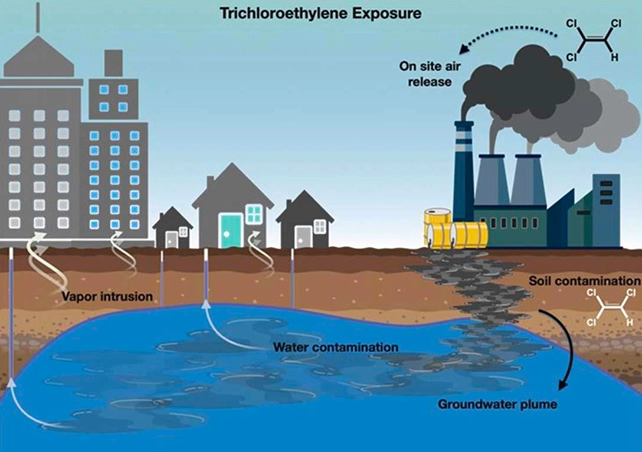
[sciencealert.com – 2023.03.17] The chemical trichloroethylene (TCE), once used widely in everything from producing decaf coffee to typewriter correction fluids, has been highlighted in a new study as potentially being a significant cause of many cases of Parkinson’s disease.
Having already been associated with increased risks of cancer and miscarriages, TCE isn’t used as widely as it once was, but the researchers behind the new report suggest that its role in Parkinson’s disease has been largely overlooked.
They pull together evidence of the extent to which TCE has been used in industrial processes, review previous studies linking the chemical with Parkinson’s, and investigate several cases where TCE and the disease could well be linked.
“TCE is a simple, six-atom molecule that can decaffeinate coffee, degrease metal parts, and dry clean clothes,” write the researchers in their published paper. “The colorless chemical was first linked to Parkinsonism in 1969.”
The use of TCE peaked in the 1970s, when around 10 million people in the US would have had contact with the chemical or something similar every day. It was being used to do everything from clean engines to anesthetize patients.
While TCE use is now much more restricted in the EU and certain US states, globally it continues to be in demand, particularly from China. Even in areas where the chemical is banned, the researchers argue, we’re still being exposed to it due to the ongoing contamination of water and soil.

Then there’s the Parkinson’s link: the researchers point to several previous studies, including one involving three industrial plant workers and one involving a car mechanic. In a study of 198 twins carried out in 2011, those exposed to TCE were five times more likely to develop Parkinson’s.
Despite these studies, and other research showing the damaging effects of TCE on animals, the exact nature of the relationship has yet to be confirmed. That’s due to numerous reasons, including people being unaware of what they’ve come into contact with, or being exposed to several potentially toxic chemicals at the same time.
“The time between exposure and disease onset may be decades,” write the researchers. “Individuals, if they were aware of their exposure to the chemical, may have long since forgotten about it.”
“Those who worked with the solvent or who lived near a contaminated site may have changed jobs or moved, making retrospective evaluation of potential clusters challenging.”
The team behind the new study now wants to see a complete ban on TCE and the closely related perchloroethylene (PCE), as well as the decontamination of sites where TCE exposure is known to have happened in the past.
What’s more, the researchers want to see a more detailed and thorough investigation into how TCE and Parkinson’s disease might be linked. With rising incidences of the disease, something about modern life seems to make us more susceptible to Parkinson’s. This chemical might be a part of the answer.
“The number of people with Parkinson’s disease has more than doubled in the past 30 years and, absent change, will double again by 2040,” write the researchers.
“Given the disease’s growing rates – more than can be explained by aging alone – other less visible causes must be contributing to its rise.”
The research has been published in the Journal of Parkinson’s Disease.
Read the original story on sciencealert.com

